LAST EDITED ON Mar-17-20 AT 11:53 PM (EDT)
Since this was the original entry in what retraoctively became the Gun of the Week series, it lacked certain refinements that came along later—most notably, it's very light on photos, and says very little about how the rifle actually works. Today, I took advantage of my table being cleaned off for another project, got out the Sturmgewehr and the camera, and took a few new pictures with an eye toward rectifying that.Disassembly begins, as it does on the real thing, with this spring-retained pin holding on the buttstock. Anyone who has ever dismantled an H&K rifle, or many another modern military-style rifle, will recognize this—virtually identical things are still with us today.
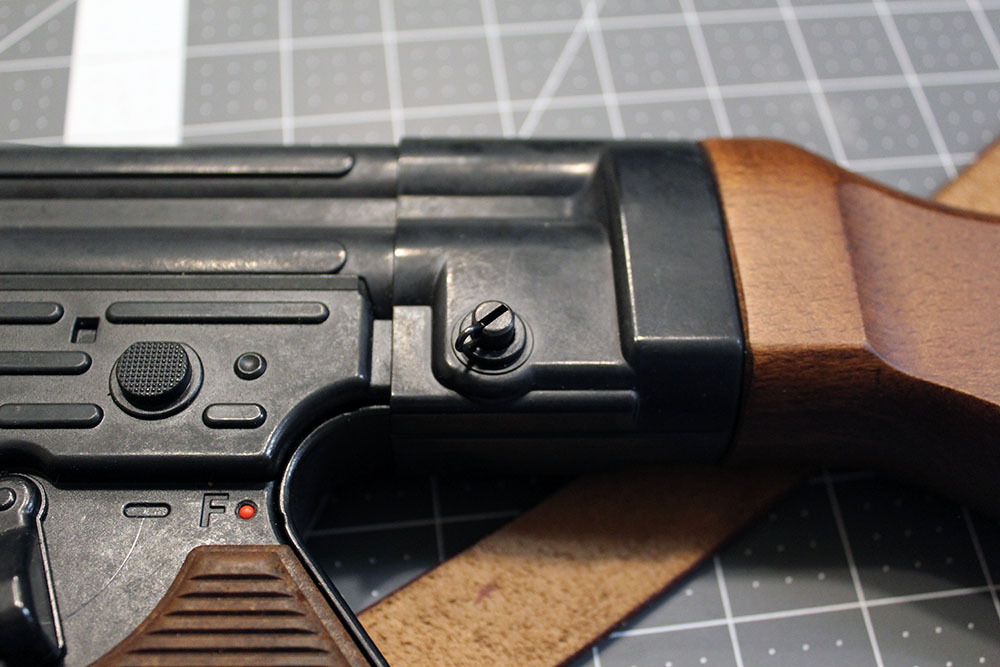
(NOTE: On a real Sturmgewehr, the round knurled button just above the safety lever is the fire selector—push in on one side for full auto, the other side for semi. On this version, it's just a cosmetic feature stamped into the sheet metal.)
With the pin removed (it's not captive, like H&K pins still aren't), the stock slides right off the back of the receiver. In a real StG 44, the recoil spring is in there, but on the rimfire version it's just a piece of wood with a metal collar at the front, a couple of metal reinforcements at the rear corners, and a little spring-loaded trapdoor on top for an oil bottle (not pictured because it would've taken three hands to get the shot).
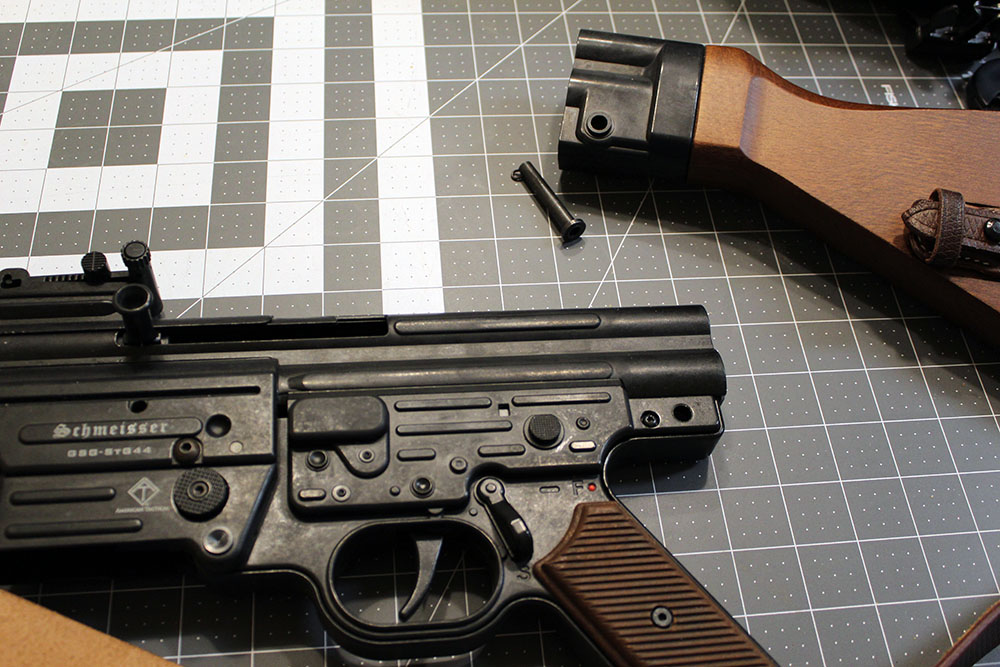
(You should probably take the sling off for this, but I couldn't be arsed.)
Here the disassembly procedure in the manual diverges slightly from reality. The description and accompanying pictures in the manual make it seem as if what you do next is swing the pistol grip/lower assembly down (another of the many features of this rifle copied in generations of subsequent Western military-pattern rifles), and then take the working bits out of the back of the upper.
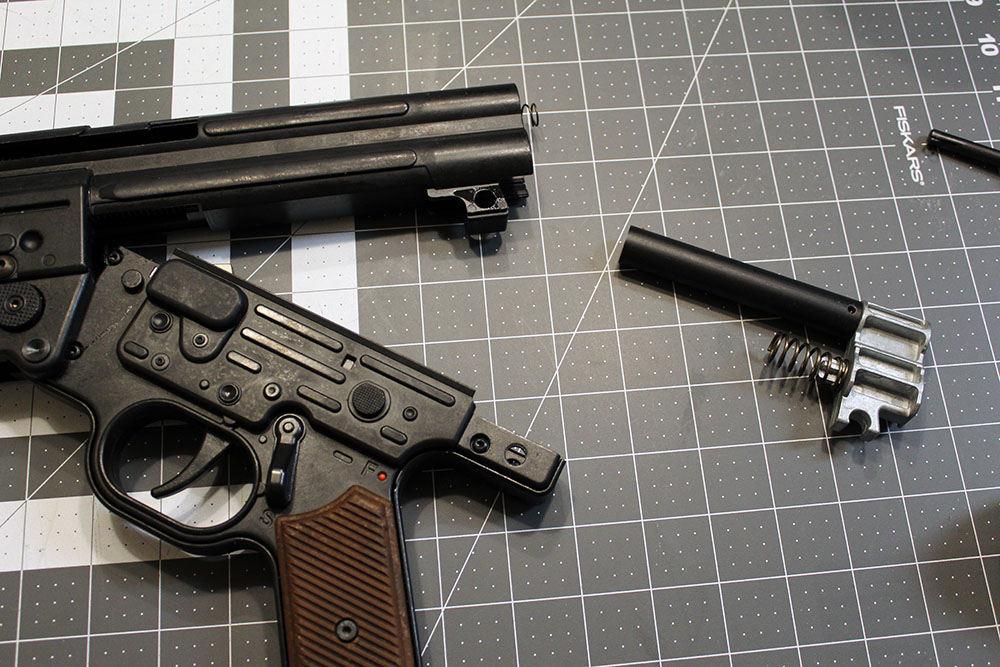
What actually happens is,you swing the lower assembly down, as in an AR, and as soon as the part at the back with the assembly pin hole is clear, that metal block at the back of the receiver pops out and flies across the table, because it's under spring pressure. You can see the spring just poking out of the upper, at the left.
(As an aside, I'm pretty sure that rear receiver block is made of Zamak, the same zinc-aluminum alloy as die-cast toy cars.)
So that was a bit unexpected. Once the rear block has been recovered, though, the rest of the working bits can be fished out of the upper in a manner very reminiscent of removing an AR-15's bolt.
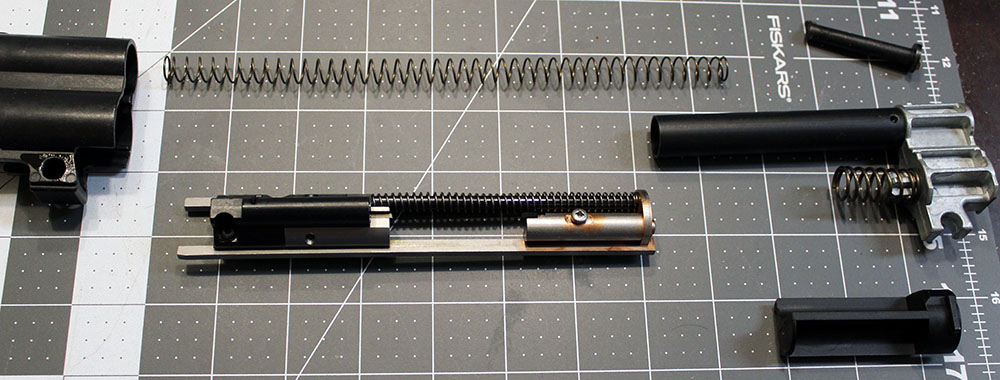
Here are the working parts of the action, all laid out. You can see that the upper receiver is basically two tubes, one larger than the other. The upper contains the charging handle (which I didn't try to take out) and that non-captive spring, which fits into the guide tube on the top part of the rear block and drives the charging handle forward. The larger lower tube contains the bolt carrier assembly and that black plastic buffer, which is there to fill the space between the bolt carrier and the large buffer spring on the bottom part of the rear block.
Note that this action has two operating springs. The buffer spring appears to be there just to cushion the impact of the bolt and carrier slamming backward (as much as anything propelled by a .22 LR round's detonation can be said to "slam"), but the long one and the captive one built into the bolt carrier both play a role in closing the action after cartridge blowback forces it open. When the rifle fires, the bolt slides backward in the carrier, and once it reaches the rear, the carrier itself slides back in the receiver; then the little spring drives the bolt to the front of the carrier and the big one returns the carrier to the front. Interesting system, and not one I've seen before (not that I've disassembled many .22 rimfire semiauto rifles; for all I know, that's how they all work).
Here's a closer look at the bolt face:
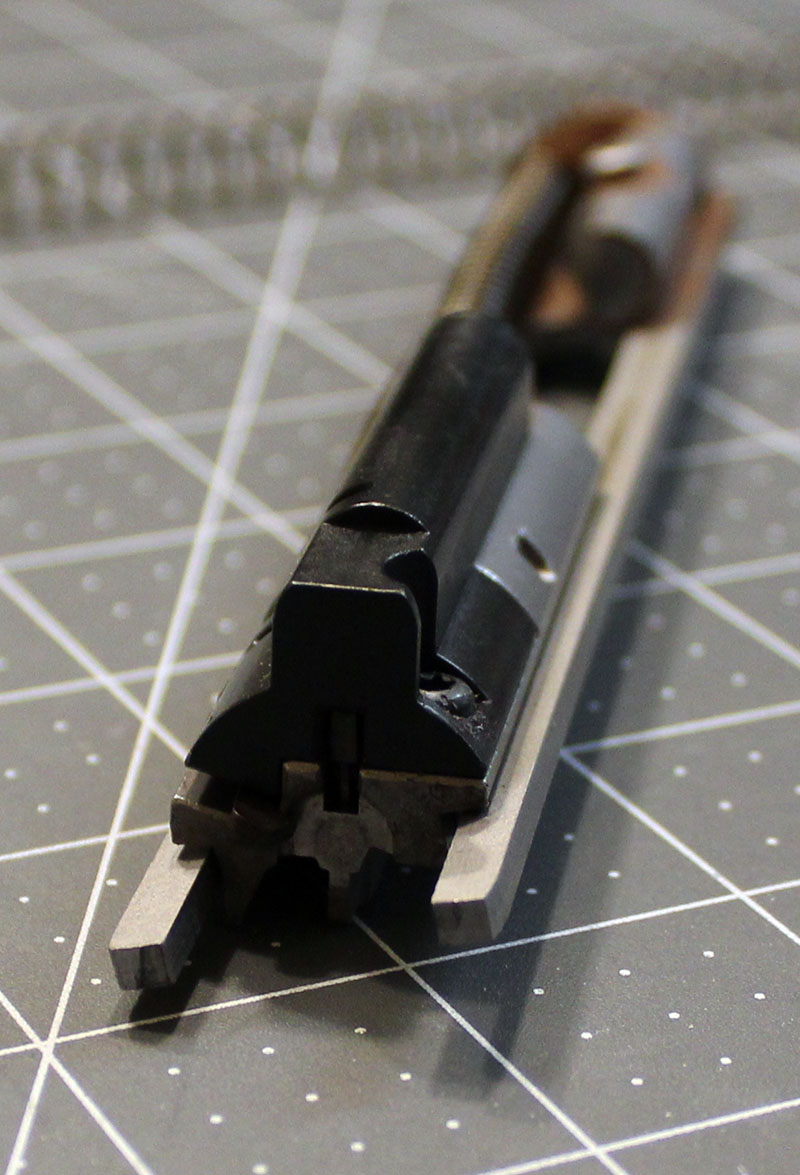
As you can see, it's pretty simple. There's an extractor on the right side of the gun (our left, from this angle), and it's a rimfire, so that vertical rectangular bit is the firing pin. I'm not 100% sure, but I think it may double as the ejector.
Looking down into the open lower, we can see that the gun is hammer-fired.
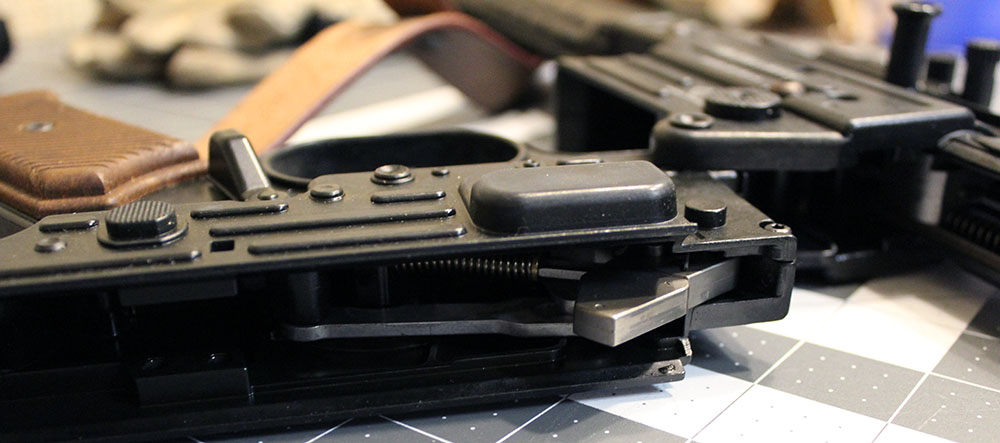
When fired, the hammer swings up into the opening in the middle of the bolt carrier, strikes the firing pin at the back of the bolt and pushes it through to set off the cartridge, and is then reset by the action of the bolt going back.
One interesting quirk of the way this rifle is set up is that the tracks for the bolt carrier in the upper receiver's lower tube are slightly off-axis.
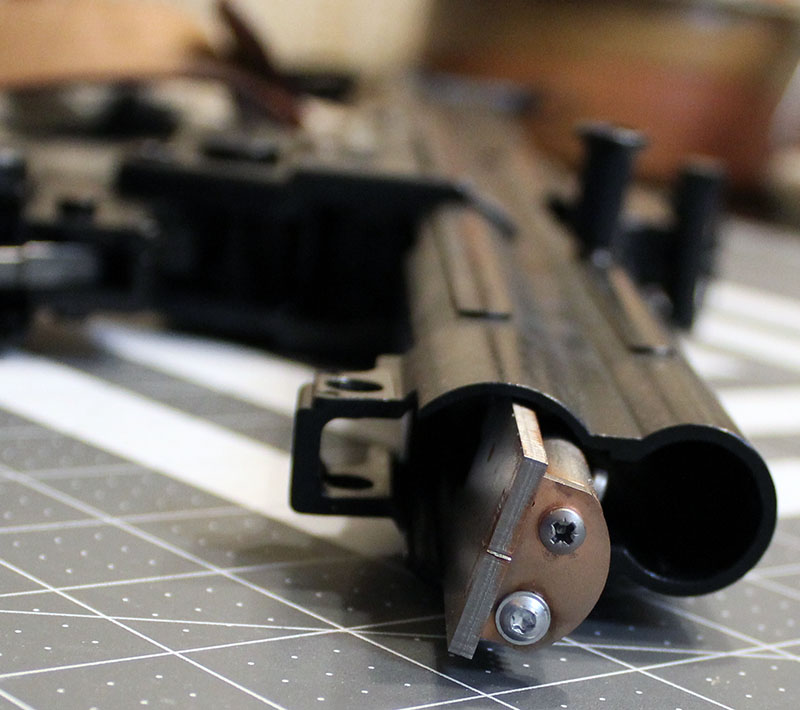
It's a little hard to see because the rifle had to be lying on its side on the table for me to get the shot, but the plane of the bolt carrier isn't horizontal when the rifle is straight up-and-down. It's slightly tilted, up at the left and down at the right. I'm not sure why; perhaps they had to do that to make the bolt line up properly with the ejection port. Since the rifle is a replica of a significantly-larger-caliber centerfire design, they had to design the inner workings around the existing form factor rather than the other way around.
Reassembly is the reverse of disassembly. Once the bolt carrier and charging handle are slid back in and all the way forward, and the plastic spacer behind the bolt carrier is in place, one must line up the upper spring with its guide sleeve, then push the rear block into place and hold it while closing the lower.
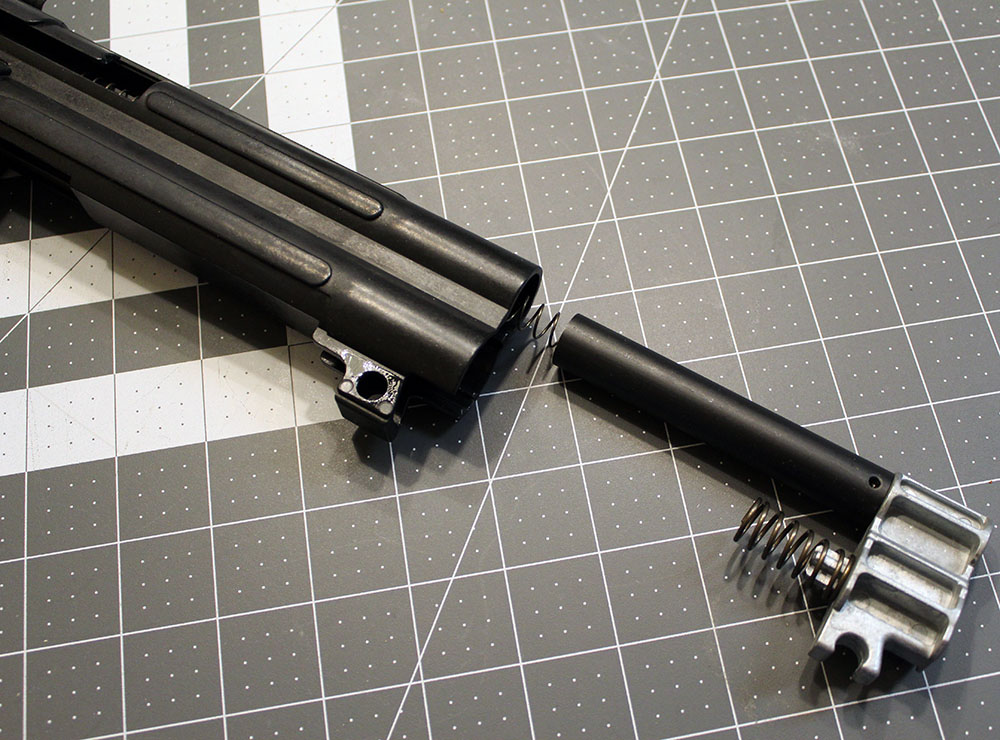
Once the back of the lower, behind the pistol grip, is in place over the assembly lug at the bottom rear of the upper, the whole thing stays together without needing to keep a hand on it, so one is free to put the buttstock back on and pin it in place without having to have a third hand, which is nice.
When I had it back together and tested it to make sure everything was in order, I noticed something about the way the action works. I'm not sure I can convey it with still photos and words, but I'll try. Here's a view of the ejection port with the action fully closed.
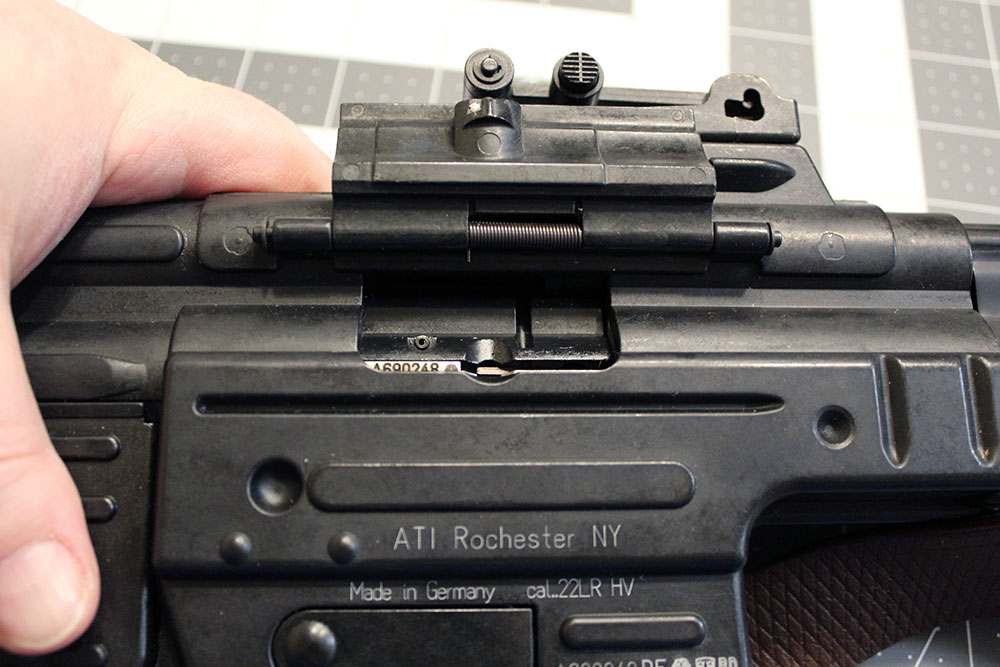
This was very awkward to photograph solo, but with a finger hooked over the charging handle and the camera in my other hand, I was able to get it to work. Pulling the charging handle back, the mechanism moves in three distinct stages, suggesting the workings of the separate springs inside. First, there's the takeup on the slack in the charging handle spring, and then, when it engages the bolt and starts to push it open against that spring, it requires more pressure. This second, stiffer resistance is pretty constant until you get it to here:
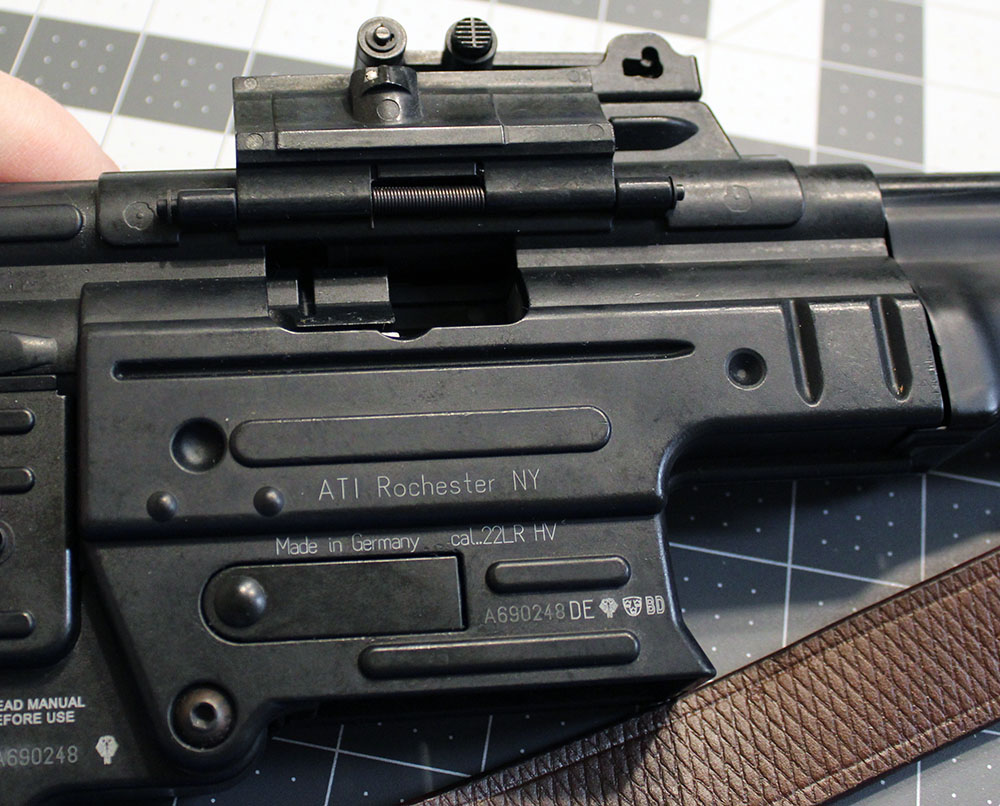
With the bolt halfway open, the resistance suddenly and markedly increases, and remains at the new, even heavier level until it's all the way open.
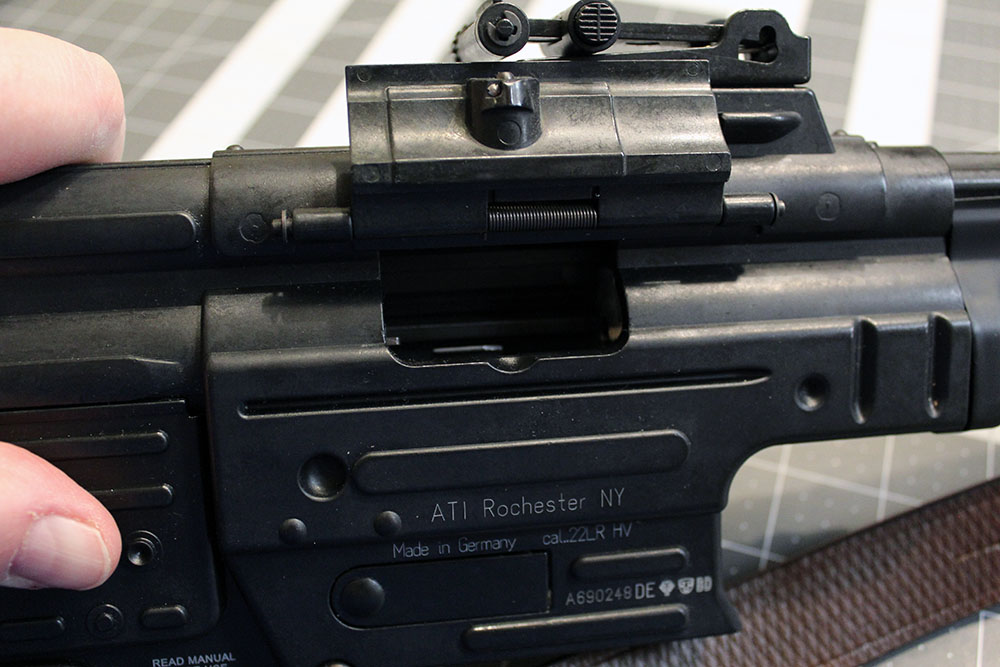
The StG 44 has no last-round hold-open, but there is a hold-open notch built into the track for the charging handle, and unlike the improvised one on my Serbian AKM-alike, it actually works. When it's in that position, the bolt comes very slightly forward before stopping.
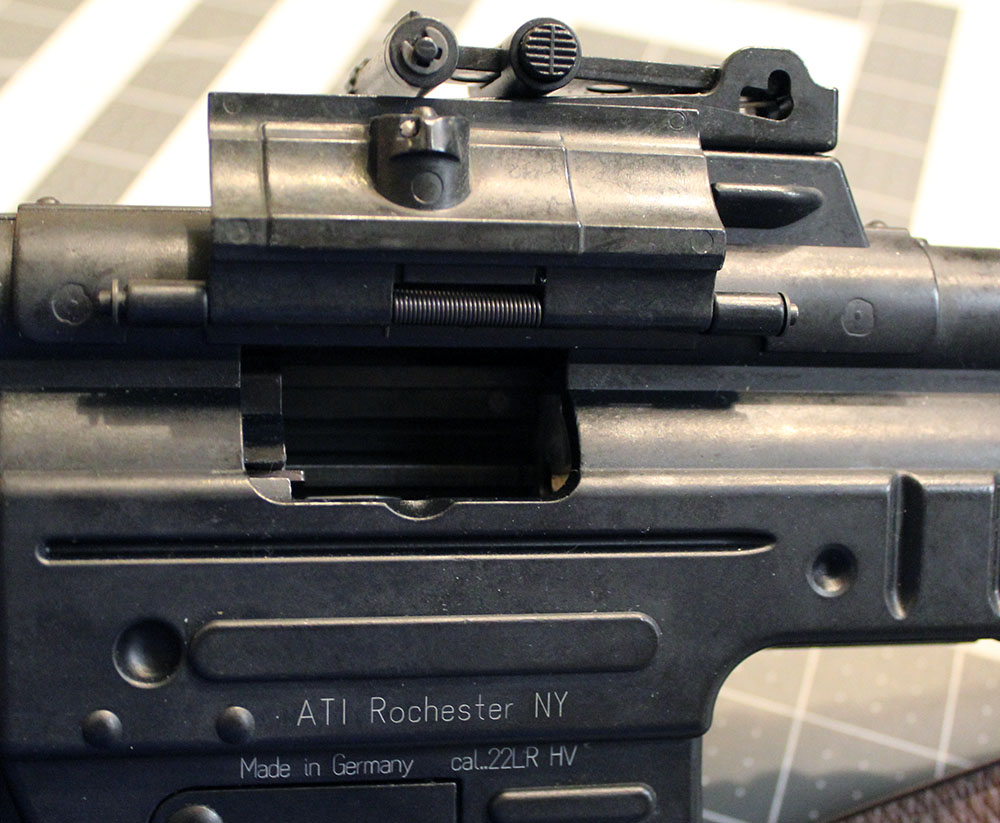
This is another feature of the Sturmgewehr that's very reminiscent of later HKs. You can even give it the classic "HK slap" to dislodge the handle from the notch and close the bolt.
While we're here, and thinking about StG 44 features that are very like features of later military rifles, the ejection port has a spring-loaded dust cover, just like on an AR-15 of 20 years later.
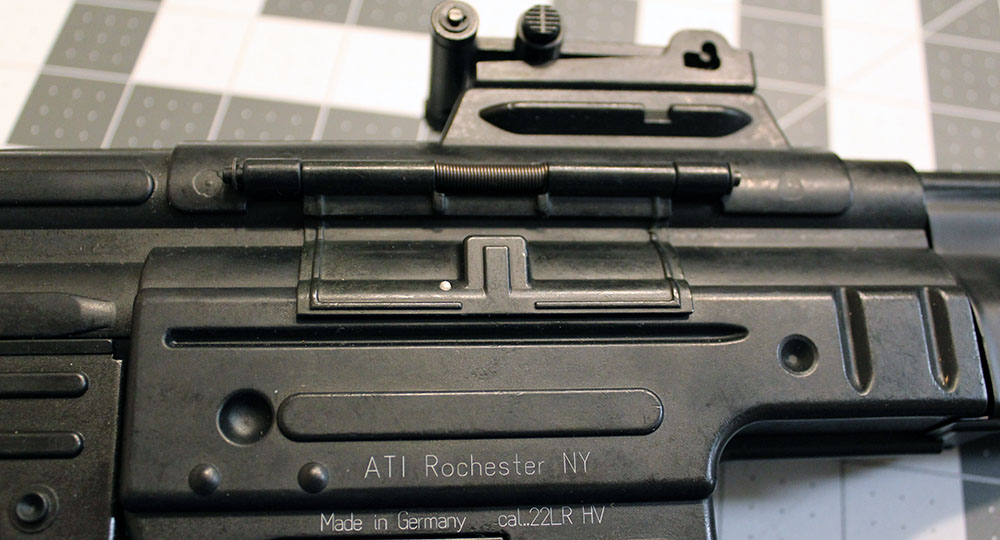
And just like an AR, it pops open automatically when the bolt opens. The only real difference is that it swings up instead of down. Ironically, it should probably have been built the other way, since in swinging up, it hits the rear sight, if said sight is set on its nearest setting.
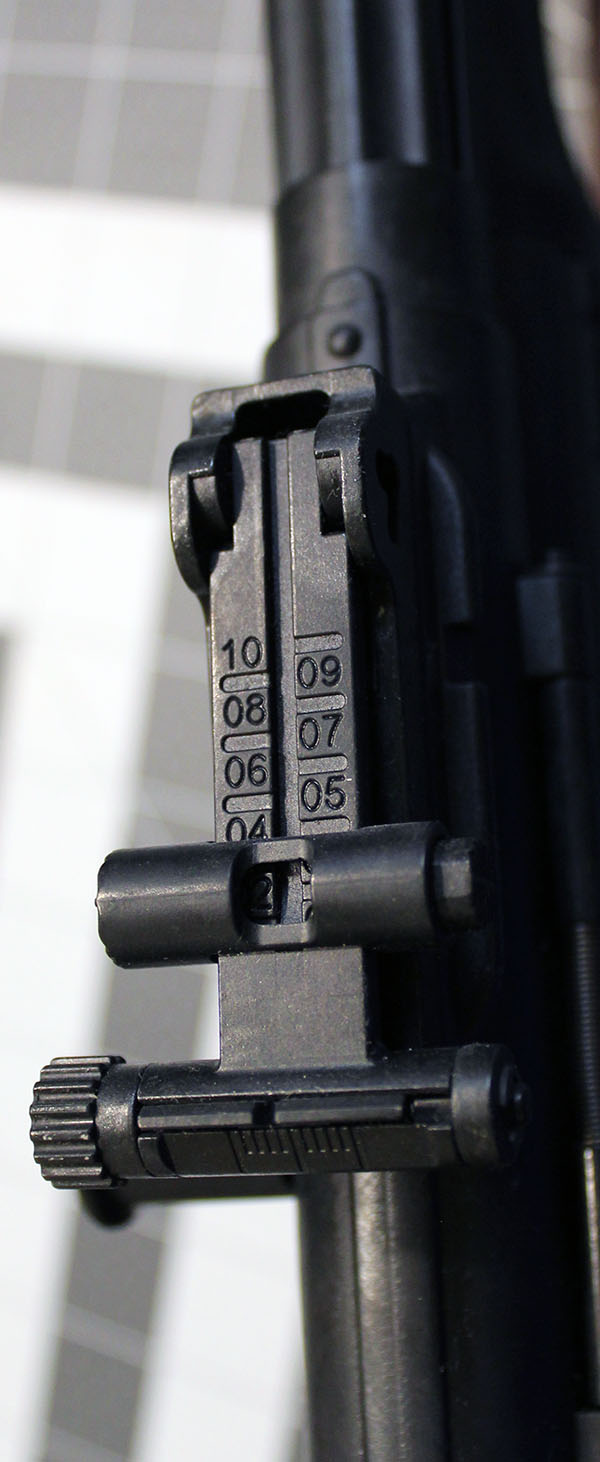
That rear sight is a pretty typical tangent sight, as found on a great many military rifles of the late 19th through mid-20th centuries. This one's calibrated out to a thousand meters, which is pretty ambitious for .22 LR. It's also adjustable for windage—this one's got a couple of clicks cranked in, which is probably not doing its zero any good.
So there you go, a closer look at the inner workings of the German Sport Guns StG 44 rimfire reproduction. It remains a .22 LR action dressed up in a Sturmgewehr costume, but there were a couple of little surprises in there.
--G.
-><-
Benjamin D. Hutchins, Co-Founder, Editor-in-Chief, & Forum Mod
Eyrie Productions, Unlimited http://www.eyrie-productions.com/
zgryphon at that email service Google has
Ceterum censeo Carthaginem esse delendam.













